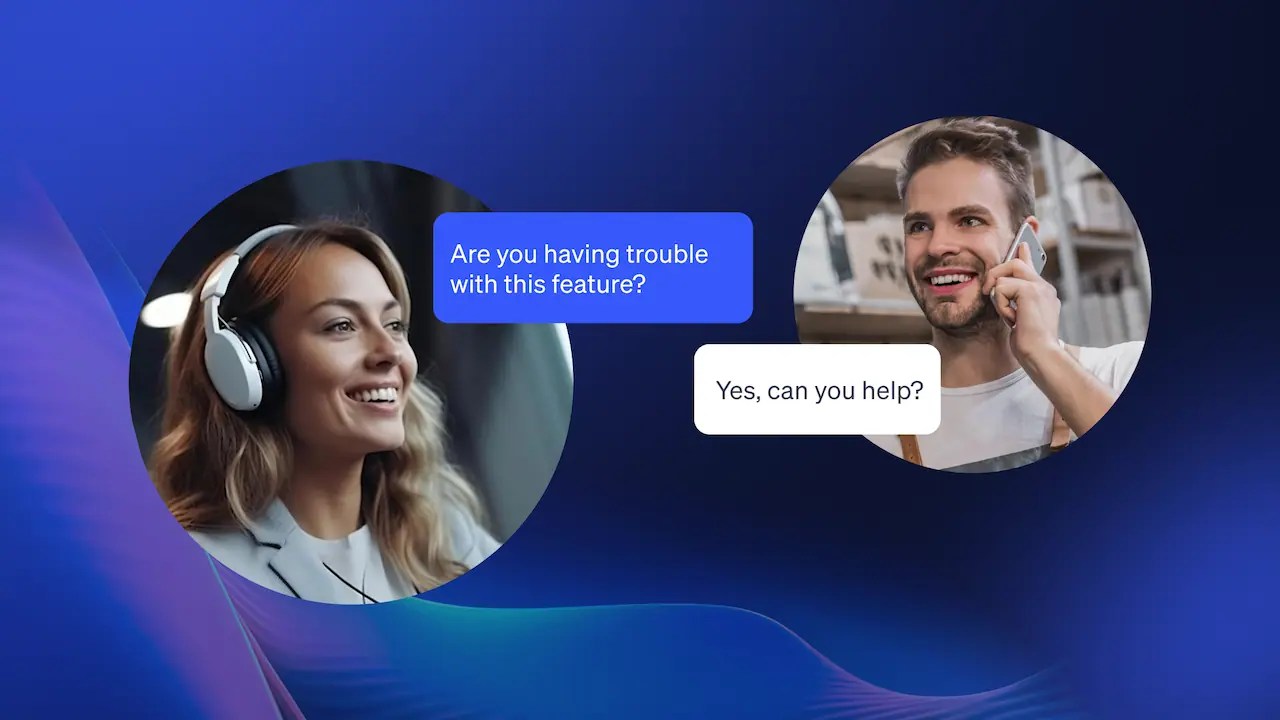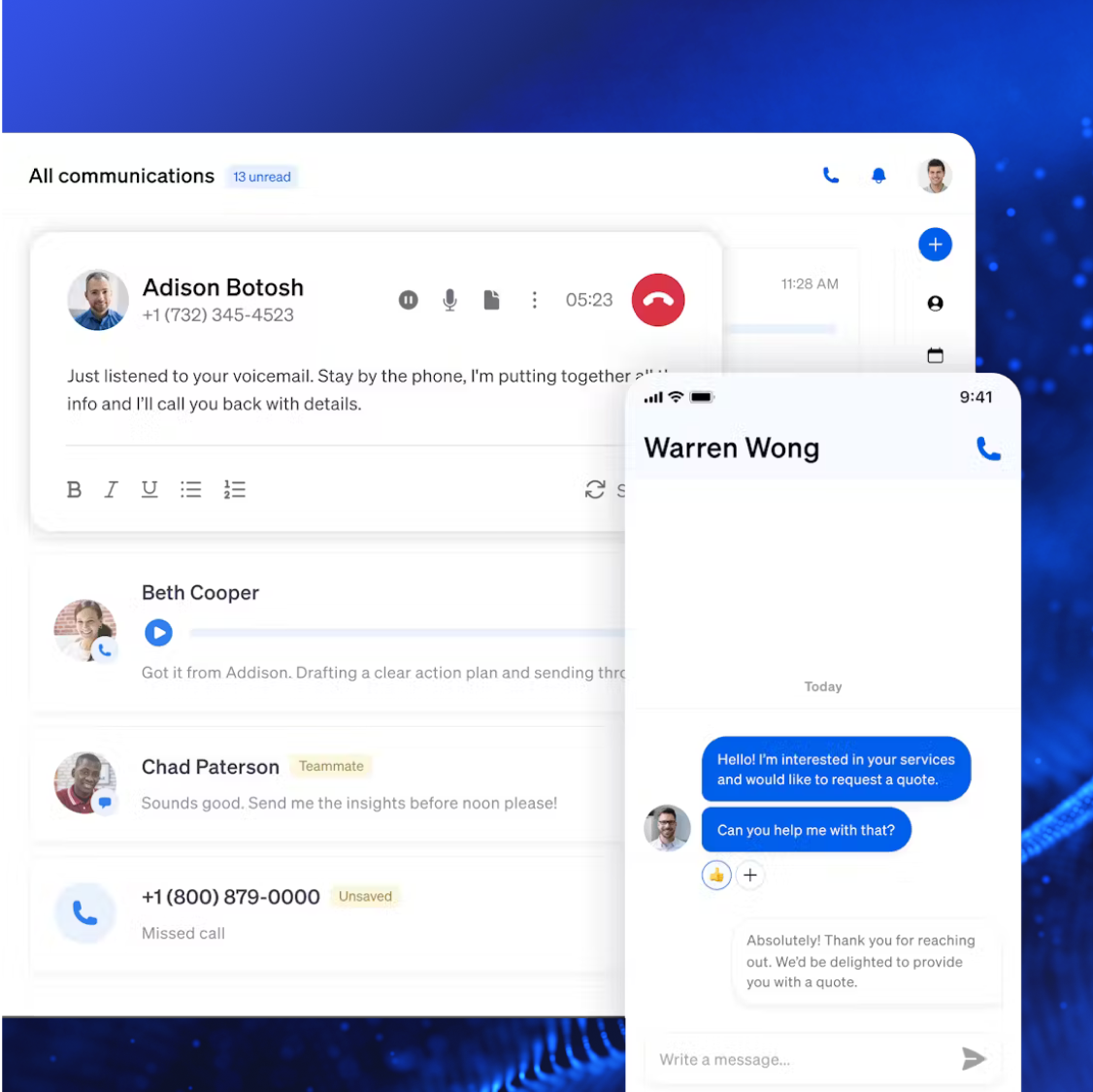The contact center industry is buzzing with innovation. But it’s also buzzing with buzzwords like digital transformation and artificial intelligence (AI).
Genuine differentiation between products is hard to spot in a crowded market. It’s possible that as vendors attempt to stand out from the crowd with their latest innovations, they instead become trapped in a copycat commoditization of their portfolios.
Simply adding that a product has AI isn’t enough. Buyers, existing customers, and contact center industry onlookers must understand the value a product or feature brings to the table. And it must be simple to find and understand.
Some vendors are doing this well. Others are falling into the jaws of defeat.

Over the years, we’ve witnessed the creation of cloud-based contact centers, AI-powered tools, and omnichannel experiences. These all promise to revolutionize customer interactions. What we’ve done as an industry is phenomenal. We’ve turned basic call queues into end-to-end digital experiences.
But when we talk about digitizing the customer experience, where does the hype end, and what’s truly achievable? This post details what a comprehensive contact center platform can do and what its limitations are and offers a glimpse into the future of customer service.
The Reality of Contact Center Platforms
Before we get carried away with hype, theory, and the art of the possible, let’s review the good things modern contact center platforms bring to the table. It’s hard for even the most stringent call center industry commentator to argue about the progress this category has made.
Enhanced agent efficiency
A major focus of contact center innovation has been increased agent productivity and efficiency. By connecting disparate systems like CRMs, call center interfaces, and phone systems, agents now only need one app to work from in many scenarios. Information gets shared between systems, so there’s no need to duplicate record updates or call notes.
Before a call reaches an agent, automatic call distribution (ACD) ensures that a caller has the best chance of reaching the best person to help them. This makes the customer journey more pleasant and saves agents time because they don’t have to send phone calls to other departments.
The front-loading of interactive voice response (IVR) systems with common FAQs and self-service options helps lessen the burden on agents, removing routine calls that don’t need genuine human help.

Improved customer experience
In addition to more quickly connecting customers to the right agents, the advent of omnichannel has enabled agents to go beyond simply offering multiple digital channels by providing a seamless customer experience.
To be sure, you can now offer customer support via email, web chat, SMS, and social media. But you can also empower agents to view a customer’s entire history.
By pulling all interactions together in a single place and allowing the cross-referencing of call recordings, SMS campaigns, and web chats, omnichannel solutions give agents a holistic view and ensure customers don’t get managed by siloed teams.
As a result, customers don’t have to repeat themselves as much, and there is a higher first contact resolution (FCR), which gives a better all-around customer experience.
| Functionality | Multichannel Contact Center | Omnichannel Contact Center |
|---|---|---|
| Supports multiple channels | ✔ | ✔ |
| Seamlessly switches between customer communication channels | ✗ | ✔ |
| Offers CRM integration for relevant customer data | ✗ | ✔ |
| Provides real-time insights on customer activity | ✗ | ✔ |
| Enables one team to handle requests across all channels | ✗ | ✔ |
Data-driven insights
Call center technology has always come with some form of reporting, be it simple call records or complicated predictive analytics.
Ultimately, it’s what you do with that data that counts. The best contact center tools are those that offer functionality that turns your data into business insights you can use to scale and optimize your business unit. Look for:
- Real-time analytics
- Workforce management
- Staffing optimization
- Customer trends analysis
- Agent performance
- Outbound call performance

Increased customer satisfaction
At the end of the day, you implement new contact center technology to keep your customers happy, improve customer retention, and improve the chances of upselling. When a solution comes together and offers faster resolution times, personalized interactions, and improved first-call resolution rates, the overriding output must be higher customer satisfaction.
There’s no single factor that can improve customer satisfaction, however. It’s the sum of all these parts:
- Short wait times
- Efficient call routing
- A connected digital experience
- Fast and thorough resolutions
- Proactive customer management

Scalability and cost savings
The as-a-service nature of CCaaS solutions is that customers can scale up and down when it suits them.
The classic comparison is that of Spotify or Netflix. No longer are you paying $10 upfront for a CD or DVD you might never play. Instead, you’re only using the number of agent licenses you need at any given time.
If you need to rapidly scale to accommodate temporary holiday staff or suffer a round of redundancies, you can increase or decrease your number of seats. This comes with the obvious benefit of flexibility and also reduces infrastructure costs compared to those for on-premises systems.

Limitations of Contact Center Platforms
We’re now going to dive into what contact centers haven’t totally conquered (yet), which is something you almost never hear contact center vendors talk about. No points for guessing our first topic!
AI isn’t perfect
If we accept that AI isn’t perfect, we must also accept that call center software or contact center software isn’t perfect.
The influx of contact center AI is impossible to ignore. Yet, in our consumer lives, we are still somewhat skeptical about AI use. While getting food delivered by drones in China is possible, asking Siri simple questions on our iPhones doesn’t always yield the results we desire.
In the contact center industry, AI chatbots and virtual assistants can handle basic inquiries, but complex issues may still need human intervention. In some cases, overreliance on AI is causing customer frustration. The right blend is some combination of using AI for help and humans for value and emotion.
Data security concerns
Ensuring the security of customer data stored within the platform is crucial. All the bells and whistles don’t matter if compliance falls by the wayside.
In some extreme cases, vendors are getting this aspect all wrong. Letting AI handle all inquiries and failing to govern it, like Talkdesk customer Patagonia allegedly did, has led to a lawsuit suggesting communications are being intercepted, recorded, and analyzed by a third party without customers’ permission.

Implementation challenges
As with any new technology, the process of integrating a new platform with existing systems and training agents (and contact center managers) on new functionalities requires time and resources. In busy contact centers, where you’re fighting inbound calls and impatient customers, setting aside the time to implement all your new features is nearly impossible.
One of the biggest failures in adoption is seen in omnichannel contact centers. While end customers may buy a license to enable email, web chat, SMS, and social media management, the rate of cross-channel adoption is alarmingly low. In fact, less less than a third of contact centers have implemented all (or even some of) the communication channels at their disposal.

Different businesses might have different reasons for this, but it’s the provider’s job to make it happen. If you’re selling a product that promises a good return on investment if the customer uses all its features, it’s your responsibility to make sure your customer can start using all those features and get that return as quickly as possible.
Achieving this involves two key elements:
- An easy-to-adopt interface that simplifies new channel onboarding
- Technical support where needed to help smooth the transition process
Fortunately, that’s where Nextiva receives its highest praise.

Overreliance on automation
What happens when you leave a dog unattended the first day you bring it home?
That’s right. It chews through your broadband filter, digs through your hallway carpet, and throws up in secret places. Many learn it the hard way.
The same is true for automation. Hyperfocusing on automation can lead to impersonal interactions. Leaving your core business support function in the hands of a tool without empathy or emotion is not something we can advocate yet (or maybe ever).
While we fully endorse the automation of workflows, data processing, and call routing, we believe human empathy and emotional intelligence remain vital for customer service.

What’s Next for Contact Centers?
We’ve come a long way since the era when adding call center modules to phone systems meant lengthy installs and long contracts. Contact center trends have come and gone, but some things remain progressive.
Turning on a new feature now happens instantly, and onboarding is handled through in-app tutorials. What’s more, features are often customer-led and based on demand.
Here’s what we expect to see in the contact center industry over the next few years.
AI advancements
As it stands, AI is fairly immature. We remain in the early adoption stage and are ironing out the creases.
Technologies like natural language processing (NLP) will become more sophisticated, enabling AI to handle even complex customer inquiries. Machine learning will continue to…learn.
This means we’ll be able to get more and better answers from AI, whether the questions are simple or complicated. Because AI will understand the context behind what’s being asked, not just the words themselves, we can trust it to handle more situations where it interacts directly with customers.

The rise of conversational AI
The thing we most want AI to do for us is to free up our human customer service agents. The more work we can offload digitally, the more dedicated our agents can be to customers who need genuine human help.
AI-powered chatbots will become more interactive, engaging in natural conversations, and will get better at building rapport with customers.
You might argue that this is an easy prediction to make, as some chatbots do a bad job of handling these tasks. That is certainly true for some bots, but not the majority of them. In fact, 74% of people confirmed they would choose a chatbot over a human agent when looking for answers to simple questions.
With the amount of investment going into conversational AI databases, like OpenAI, genuine conversations between humans and AI are becoming increasingly better.

Personalized customer journeys
Through in-depth data analytics, contact centers will personalize the customer journey across all touchpoints. To an extent, this is possible now. In the future, we expect predictable outcomes and reasons for calling and more self-service.
How?
Based on historical metrics, sentiment analysis, and behavior patterns, it may become possible to start remedying the reason for calling before you pick up the phone or answer a web chat.
If invoices are outstanding but don’t match regular spending, this is the most probable reason for the call. What happens after this is determined could be things like automated routing, escalation handling, or self-service.
Likewise, if there’s an outage in a specific area, geographic detection cross-referenced with product inventory could predict that the next call is going to be about the outage. Instead of holding a call in a queue, you may play an automatically generated message to let your customers know they’re affected and tell them what steps you’re taking.

The human–AI mix
As for striking a balance between AI and dependence on contact center agents, the future lies in a collaborative approach where AI empowers and complements human agents, not replaces them. We’ve already seen some companies jump the gun, trying to do more work with fewer agents, cutting their teams, and suffering because AI isn’t fully ready to understand emotion and complex contexts.
While there are still lessons to be learned, we’re confident that a balanced approach that combines AI and human efforts will be the only way forward when it comes to using AI efficiently and securely in your organization.

Related: Contact Center Infrastructure Software: What’s Under the Hood?
Prepare for the Future With Nextiva
Knowing what’s hype and what’s reality is crucial when deciding on buying contact center software. Browsing feature lists and understanding context and use cases are extremely different things, and their dissimilarities should not be taken lightly.
Both buyer and provider must acknowledge that while technology is capable of innovating business communications, there needs to be a cultural shift with users, proper onboarding, training, and expectations when harnessing it.
Nextiva is an exceptional platform for digitally transforming your business communications. It’s backed by teams of brilliant people who are experienced in rolling out what you need rather than what we can provide.
Ready to discover your contact center’s future? Take Nextiva for a spin here.
Top AI-powered contact center.
All conversations in one platform: Empowering agents, satisfying customers.















 Customer Experience
Customer Experience 







